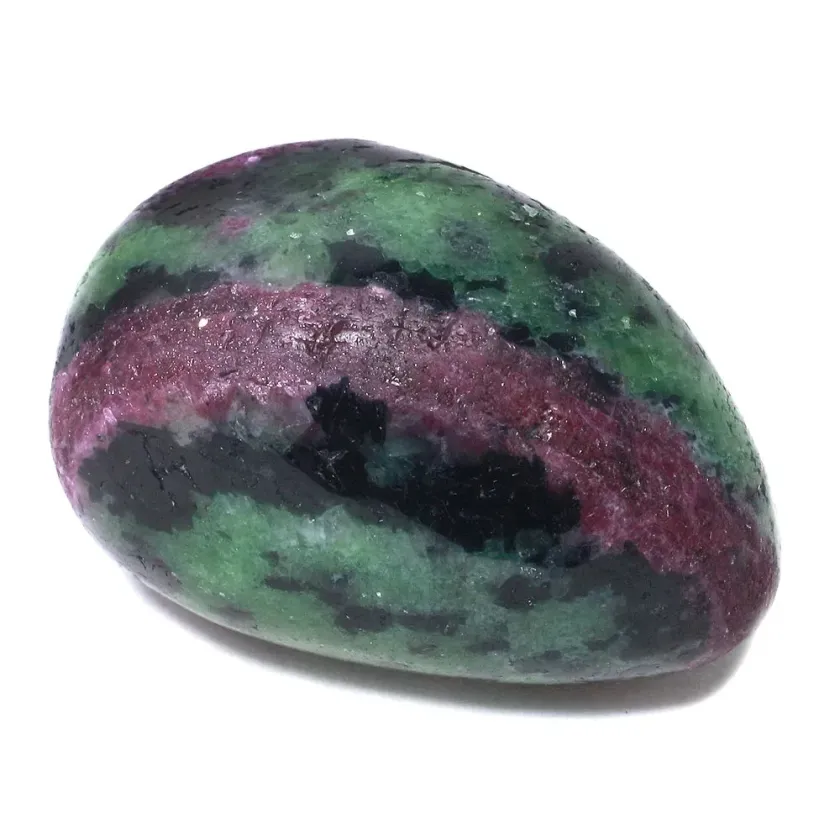
Appearance
A wide spectrum of colors, including green, blue, gray, pink, and yellow, are displayed by zoisite. Tanzanite, the most well-known variant, has a blue to violet-blue hue. Zoisite can be found in granular or large forms, as well as transparent to translucent crystals. When polished, it frequently has a vitreous to oily sheen.
Geographical Distribution
Around the world, zoisite can be found in many places, such as Tanzania, Kenya, Austria, Switzerland, Italy, and the United States. Particularly in regions where igneous and metamorphic rocks have come into contact, it develops in metamorphic rocks.
History
Historically, zoisite has not been as popular or frequently utilized as certain other gemstones. But in the gemstone industry, a particular kind of zoisite known as “tanzanite” has become very popular recently. Tanzanite gets its name from the blue to violet-blue type of zoisite that is mainly found in Tanzania. Due to its distinctive color and scarcity, it was originally found in the 1960s and has since grown to be one of the most sought-after gemstones.
Chemical Composition
The chemical formula for zoisite is Ca2Al3(SiO4)(Si2O7)O(OH). This mineral is a calcium aluminum silicate.

Types
The following information relates to zoisite variants and gemstone forms:
Tanzanite:
A blue to violet-blue form of zoisite is called tanzanite. It got its name because it was initially found in Tanzania in the 1960s. The presence of trace levels of vanadium in the crystal structure of tanzanite is responsible for its color. Due to its uncommon color and scarcity, it is greatly valued. For usage in jewelry, tanzanite is frequently faceted into gemstones.
Thulite:
The pink to reddish-pink form of zoisite is called thulite. Impurities including manganese are what give it its color. Named for the fabled island of Thule, thulite is mainly found in Norway. It is occasionally used as a gemstone, especially when carved into ornamental pieces or in cabochon form.
Anyolite:
Anyolite is a mixture of zoisite and ruby crystals, sometimes referred to as “ruby in zoisite.” Its unique and striking look is produced by the embedded ruby crystals in a green zoisite matrix. Anyolite is mostly found in Tanzania and is frequently used as a collector’s stone and in decorative carvings.
Zoisite Cat’s Eye:
Additionally, zoisite may display chatoyancy, sometimes referred to as the “cat’s eye effect.” When zoisite is cut and polished correctly, it can exhibit a cat’s eye-like band of light that travels over the surface. Gemstones with a zoisite cat’s eye are extremely rare and valued by collectors.
Other Varieties:
In addition to these hues, zoisite can also be green, gray, yellow, or brown. Compared to tanzanite and thulite, these variants are less well-known and have less commercial significance. Green zoisite is frequently carved into ornamental items or used as a lapidary material.
Uses
- Gemstone Jewelry: As a gemstone, zoisite—especially the tanzanite variety—is highly prized. Tanzanite gemstones exhibit a vivid blue to violet-blue hue when they are cut and faceted. They are frequently utilized in jewelry, including bracelets, necklaces, earrings, and rings. Collectors and jewelry enthusiasts find tanzanite to be a desirable gemstone due to its unusual color and rarity.
- Ornamental Objects: Zoisite is utilized in decorative carvings and artifacts, particularly the thulite form. Its pink to reddish-pink hue works well for artistic creations. Zoisite can be carved to create figurines, sculptures, beads, and other decorative objects.
- Lapidary Purposes: Lapidaries use zoisite in a variety of colors and forms for shaping, polishing, and cutting. It can be shaped into beads, cabochons, or other shapes to be used as decoration or to make jewelry.
- Collectibles and Specimens: Mineral enthusiasts and gemstone collectors are big fans of zoisite, especially the rarer types like tanzanite and anyolite. Zoisite specimens are gathered and exhibited for their artistic value and uniqueness, particularly those that have distinctive color or optical characteristics.
- Decorative Stones: Because of its eye-catching hues and patterns, zoisite can be used as decorative stones. Adding a natural touch to architectural spaces, it can be employed in interior design applications like accent pieces, countertops, and tiles.
- Industrial Applications: Zoisite has been employed in a number of industrial applications, albeit less frequently than in gemstones. It can be used as an abrasive material to cut and polish other minerals and materials because of its hardness. Additionally, zoisite can be used to make ceramics, refractory materials, and as a filler in other composite materials.
Table





